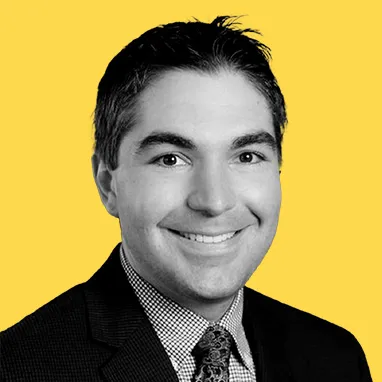Overview: Naloxone is an emergency treatment that quickly reverses the effects of opioids, such as during an overdose. It works by blocking opioid receptors in the body. Naloxone comes as a nasal spray or a liquid that is injected. Some forms are available over-the-counter (OTC). Ask your health care provider to show you how to use the naloxone product you have and teach your family, friends, and caregivers when and how to use it. Anyone using naloxone should also seek emergency medical care.
Uses
What is naloxone used for?
Naloxone is commonly used as an emergency treatment to reverse the effects of opioids in an opioid overdose. Examples of opioids include prescription pain medicines, like oxycodone, and illicit drugs, like heroin. Anyone using naloxone should also seek medical care right away.
Symptoms of an opioid emergency or overdose include slow, shallow, or no breathing; extreme sleepiness; and not being able to wake up.
Naloxone is also available in an injectable form that may be given by a health care provider in a hospital, such as to help reverse the effects of opioids after surgery.
Naloxone may also be used for other conditions as determined by your health care provider.
How does naloxone work (mechanism of action)?
Naloxone works by blocking opioid receptors in the body. This stops opioids from working and temporarily reverses their effects. This can help people begin to breathe normally again and become alert while seeking medical care.
How is naloxone supplied (dosage forms)?
Brands and other names
- Kloxxado
- Narcan
- Rezenopy
- Rextovy
- RiVive
- Zimhi
Dosage forms and strengths
- 3 mg, 4 mg, 8 mg, 10 mg per spray nasal spray
- 0.4 mg/mL, 1 mg/mL solution for injection
- 5 mg/0.5 mL single-dose pre-filled syringe
How should I store naloxone?
Check the product label for specific storage information. Naloxone should usually be stored at room temperature, between 68 F and 77 F (20 C and 25 C). It can be exposed to temperatures between 59 F and 86 F (15 C and 30 C) for shorter periods of time, such as when you’re transporting it. Store it in a cool, dry place. Some products may be able to be stored at slightly higher or lower temperatures. Do not freeze or expose it to excessive heat above 104 F (40 C). Protect it from light. Ask your pharmacist if you have questions about how to store the naloxone product you have.
Side Effects
What are the most common side effects of naloxone?
The most common side effects of naloxone are listed below. These side effects may vary, depending on the form of naloxone that is used. Tell your health care provider if you have any of these side effects that bother you.
- Stomach pain
- Feeling weak or tired
- Dizziness
- Headache
- Nasal irritation
- Feeling lightheaded or like you are going to faint
- Tingling in your mouth
- Common cold symptoms or discomfort in the nose
- Change in how things taste
- Nausea
There may be other side effects of naloxone that are not listed here. Contact your health care provider if you think you are having a side effect of a medicine. In the U.S., you can report side effects to the FDA at www.fda.gov/medwatch or by calling 800-FDA-1088 (800-332-1088). In Canada, you can report side effects to Health Canada at www.health.gc.ca/medeffect or by calling 866-234-2345.
What are the serious side effects of naloxone?
While less common, the most serious side effects of naloxone are described below, along with what to do if they happen.
Severe Allergic Reactions. Naloxone may cause allergic reactions, which can be serious. Get help right away if you have any of the following symptoms of a serious allergic reaction.
- Breathing problems or wheezing
- Racing heart
- Fever or general ill feeling
- Swollen lymph nodes
- Swelling of the face, lips, mouth, tongue, or throat
- Trouble swallowing or throat tightness
- Itching, skin rash, or pale red bumps on the skin called hives
- Nausea or vomiting
- Dizziness, feeling lightheaded, or fainting
- Stomach cramps
- Joint pain
Opioid Withdrawal. You may have the following symptoms of opioid withdrawal if you use naloxone while you have been using opioids. If you use naloxone, also contact 911 right away.
- Fever, shaking, shivering, trembling, or sweating
- Nausea, vomiting, or diarrhea
- Feeling angry, restless, or nervous
- Body aches
- Runny nose or sneezing
- Fast heart rate or increased blood pressure
- Stomach cramps
- Weakness
- Goosebumps
- Yawning
Accidental Needle Stick Injury. If naloxone is given as an injection, it is possible to accidentally stick yourself with the needle. This may put you at risk of health issues, such as an infection. Talk to your health care provider about how to inject naloxone properly. Contact your health care provider right away if you accidentally stick yourself.
Warnings & Precautions
Who should not use naloxone?
Allergies to Ingredients. People who are allergic to any of the following should not use naloxone.
- Naloxone
- Kloxxado
- Narcan
- Rextovy
- Rezenopy
- RiVive
- Zimhi
- Any of the ingredients in the specific product
Your pharmacist can tell you all of the ingredients in the specific naloxone products they stock.
What should I know about naloxone before using it?
If naloxone was prescribed to you by a health care provider, use it as prescribed. If you are using over-the-counter (OTC) naloxone, follow the instructions that come with the product.
Keep naloxone out of the reach of children.
There are several forms of naloxone available. Some devices are sprayed into the nose and some are injected. Ask your health care provider to show you how to use the naloxone product you have. Read and follow the instructions for your product and make sure you understand how to use it properly. Since you cannot use naloxone on yourself during an overdose, you should teach your family, friends, and caregivers when and how to use it. If you have any questions, talk to your health care provider.
Naloxone is a life-saving medicine that only provides short-term relief from the effects of opioids. It is not a replacement for emergency care. You or a caregiver should use naloxone and call 911 in an emergency when someone is not breathing or responding. Rescue breaths or CPR (cardiopulmonary resuscitation) may be needed until emergency help arrives.
It is very important to call 911 right away if naloxone is used, even if the person wakes up afterward. The effects of naloxone do not last long. The person may have symptoms of an overdose again, even after naloxone is given. If this happens, another dose of naloxone may need to be given or they may need other emergency care.
Once a naloxone device has been used, it cannot be used again. If you need to give another dose of naloxone, you will need to use a new device.
Naloxone only works to reverse the effects of opioids. And it can be used even if you are not sure that the person has taken opioids. It is important to give naloxone right away, because serious breathing problems from an opioid emergency can lead to death. If the person has not taken opioids, giving naloxone will not harm them or have any effect.
Naloxone devices with a needle should not be thrown in the trash. Ask your health care provider about how to best throw away this type of device.
Always check your naloxone device before using it. Since naloxone is only used in an emergency, it is best to check your naloxone device every few months to make sure it has not expired and is sealed.
Since it is not possible to know when an opioid emergency may happen, naloxone should always be available, including at home, work, school, and other locations. If possible, carry naloxone with you.
What should I tell my health care provider before using naloxone?
Tell your health care provider about all of your health conditions and any prescription or over-the-counter (OTC) medicines, vitamins/minerals, herbal products, and other supplements you are using. This will help them know if naloxone is right for you.
In particular, make sure that you discuss any of the following.
Heart Problems. Tell your health care provider if you have or have had any heart problems, including heart disease or an irregular heart rhythm.
Other Medicines and Supplements. Naloxone may not work as well if you are using certain medicines. Before using naloxone, tell your health care provider about any prescription or over-the-counter (OTC) medicines, vitamins/minerals, herbal products, and other supplements you are using. See the Interactions section for more details.
Pregnancy. Tell your health care provider if you are pregnant or plan to become pregnant. If you are pregnant and have an opioid-related breathing emergency, you should use naloxone and get emergency help right away. If you use naloxone while pregnant, your baby may have withdrawal symptoms. Tell your health care provider you have used naloxone so your baby can be monitored.
Breastfeeding. It is not known if naloxone passes into breast milk. Tell your health care provider if you are breastfeeding or plan to breastfeed. If you are breastfeeding and have an opioid-related breathing emergency, you should use naloxone and get emergency help right away.
Interactions
Does naloxone interact with foods or drinks?
There are no known interactions between naloxone and foods or drinks.
There are no known interactions between naloxone and alcohol.
Does naloxone interact with other medicines (drug interactions)?
Always tell your health care provider about any prescription or over-the-counter (OTC) medicines, vitamins/minerals, herbal products, and other supplements you are using.
In particular, make sure that you discuss if you are taking a mixed agonist/antagonist or partial agonist opioid analgesic, such as buprenorphine (Butrans, Sublocade), butorphanol, and others, which is a medicine used to treat certain types of pain or opioid use disorder.
This may not be a complete list of medicines that can interact with naloxone. Always check with your health care provider.
Overdose/Missed Dose
What should I do if I accidentally use too much naloxone?
Naloxone is used as an emergency treatment to reverse the effects of opioids in an opioid overdose. If you or someone else has used naloxone, call 911 right away.
What should I do if I miss a dose of naloxone?
Naloxone is meant to be used for emergencies only. Always contact 911 and get medical help right away after using naloxone.
You Might Also Like
Are you currently using Naloxone (Narcan, Kloxxado, and others)?
This survey is being conducted by the WebMD marketing sciences department.







 Reviews
Reviews